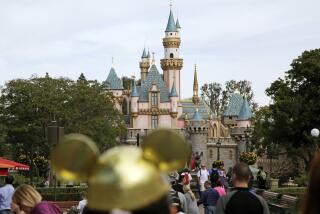L.A. Zoo reopens for the second time during the pandemic
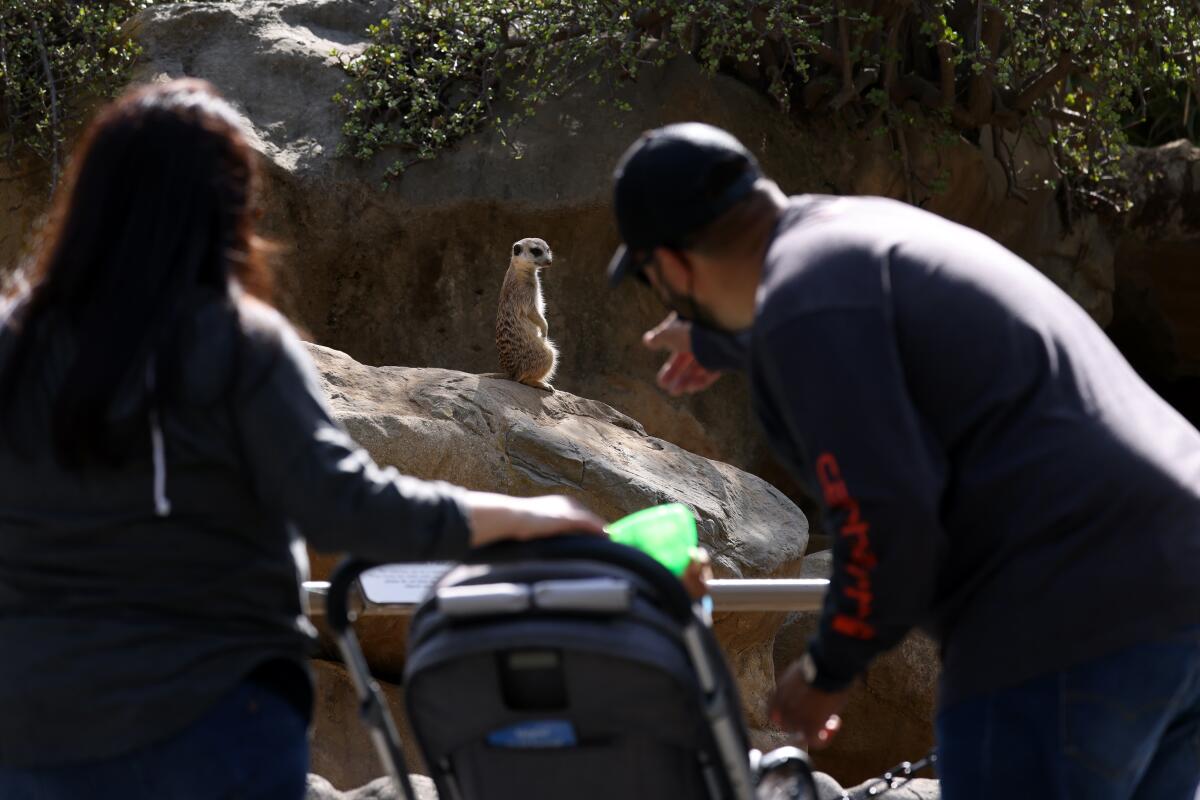
- Share via
A gorilla sat on a blanket on a secluded grassy patch in an enclosure at the Los Angeles Zoo and calmly munched lettuce leaves. It appeared to be a perfect socially distanced activity for a bright and sunny Tuesday afternoon.
Onlookers gathered for their own pandemic-friendly excursions. The zoo had re-reopened that morning — after shuttering Dec. 7 for the second time amid the COVID-19 pandemic — and attendees were eager to see the animals. Many were eager just to be doing something, anything, outside their homes.
The gorilla paused his picnic to look back at the small crowd, the first “fans” he’d seen in just over two months. From the other side of the enclosure, Riley Hampsten, 5, of Lancaster, exclaimed, “Hey, I’m looking at you, and you’re looking at me, and you’re funny.”
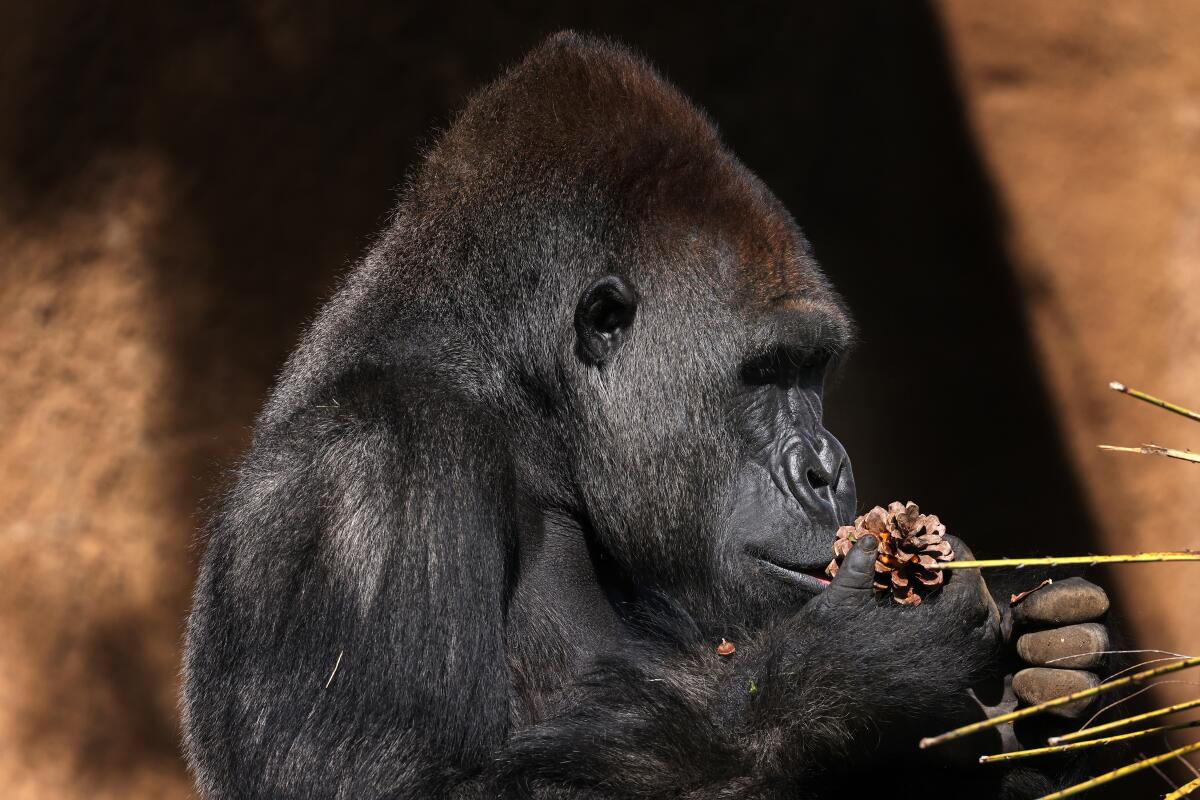
It would have been like any normal day at the zoo except that Riley — and everyone else — was masked. There were also fewer people milling about.
In an effort to curb the spread of the coronavirus, capacity is capped at 2,400 people per day, with a maximum of 400 allowed in per hour, according to Mei Kwan, deputy director of the zoo, which is a department of the city of Los Angeles. With the grounds spanning about 133 acres, there’s ample room for visitors to stagger themselves the required six feet apart, Kwan said. Or, as the zoo puts it, “one zebra apart.”
Hands-on and indoor exhibits remain closed. A plastic snake that children would typically climb on was cordoned off by plastic fencing. Doors to a reptile and amphibian “lair” located in an enclosed structure were closed. Cranks to churn out commemorative coins appeared to be wrapped in burlap to ward off grasping hands.
“We’re really excited to welcome all our guests and members back to the zoo, and we’re ready to receive them,” Kwan said. After closing early last year while officials tried to get a handle on the pandemic, the zoo reopened with safety precautions in late August. But it was forced to close again when coronavirus cases surged in the fall.
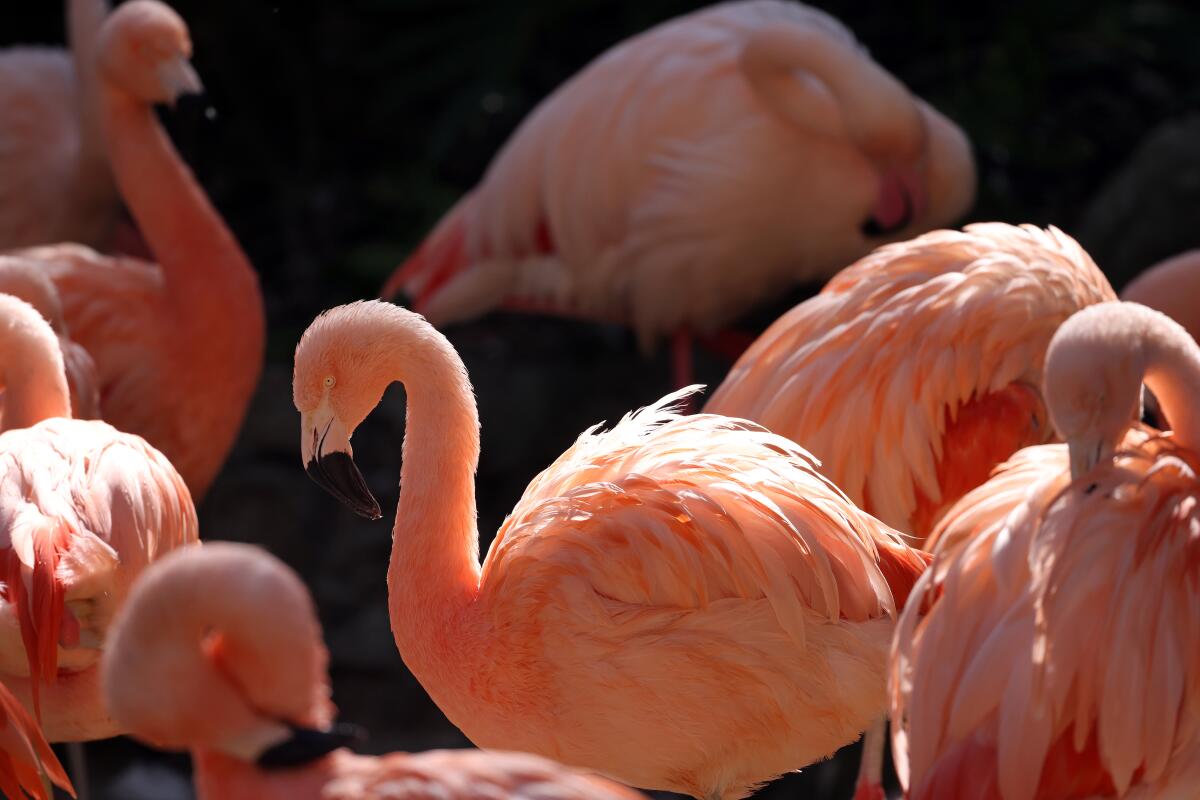
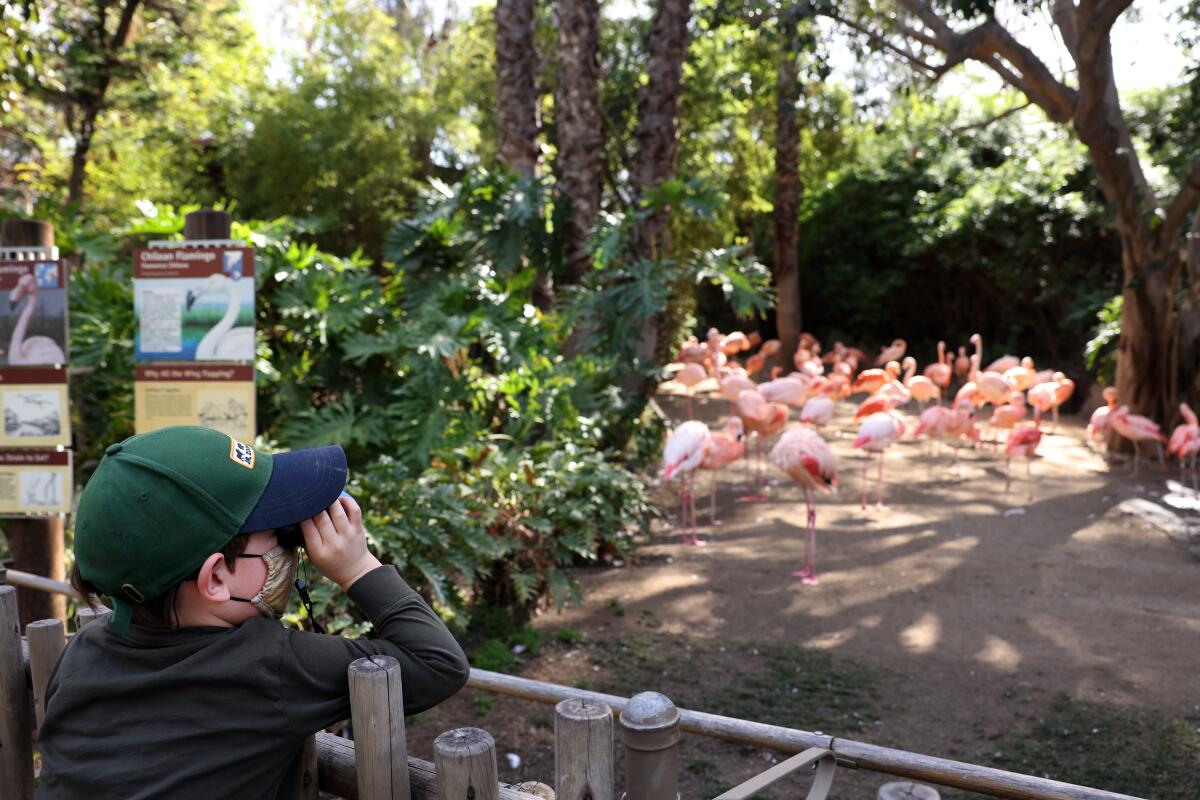
“This is one of the few opportunities that Angelenos get to come up close and personal and see wildlife that they may never see in their life,” Kwan said.
Sarah Atkinson said the animals were just waking up when she and her husband, Frank Brown, arrived at about 10:30 a.m., but a few hours later they were up and soaking in the sunshine. As she spoke, zebras strutted in pairs just a few feet away.
Atkinson, 64, and Brown, 73, symbolically “adopted” a gorilla from the zoo for Valentine’s Day. They trekked up from Seal Beach to see their fur baby.
Some families with children said they were there for an educational experience. Others just seemed happy to be out under the sun.
Chelsea Tsuda, of Torrance, said she and her two kids have been stuck in the house and were getting “really into animals lately.” So when they heard of the zoo’s reopening, they made a reservation.
“It feels nice. It feels normal again — somewhat,” Tsuda said, standing just outside the flamingo exhibit.
Her daughter Leah Sanchez, 7, was wearing a fuzzy wolf hat and clutching a stuffed wolf. She wasn’t sure if she’d see a real wolf that day, but her smile said she hoped she would.
Atkinson said she enjoyed some of the zoo’s pandemic modifications: “It’s really nice not having a ton of people here.”
Reduced attendance notwithstanding, the zoo is grateful to sell tickets again, Kwan said. The attraction has lost about $1 million in general admissions revenue since its most recent closure and more than $7 million throughout the pandemic, she said. City officials allocated $15 million from the general fund to support the zoo’s operations.
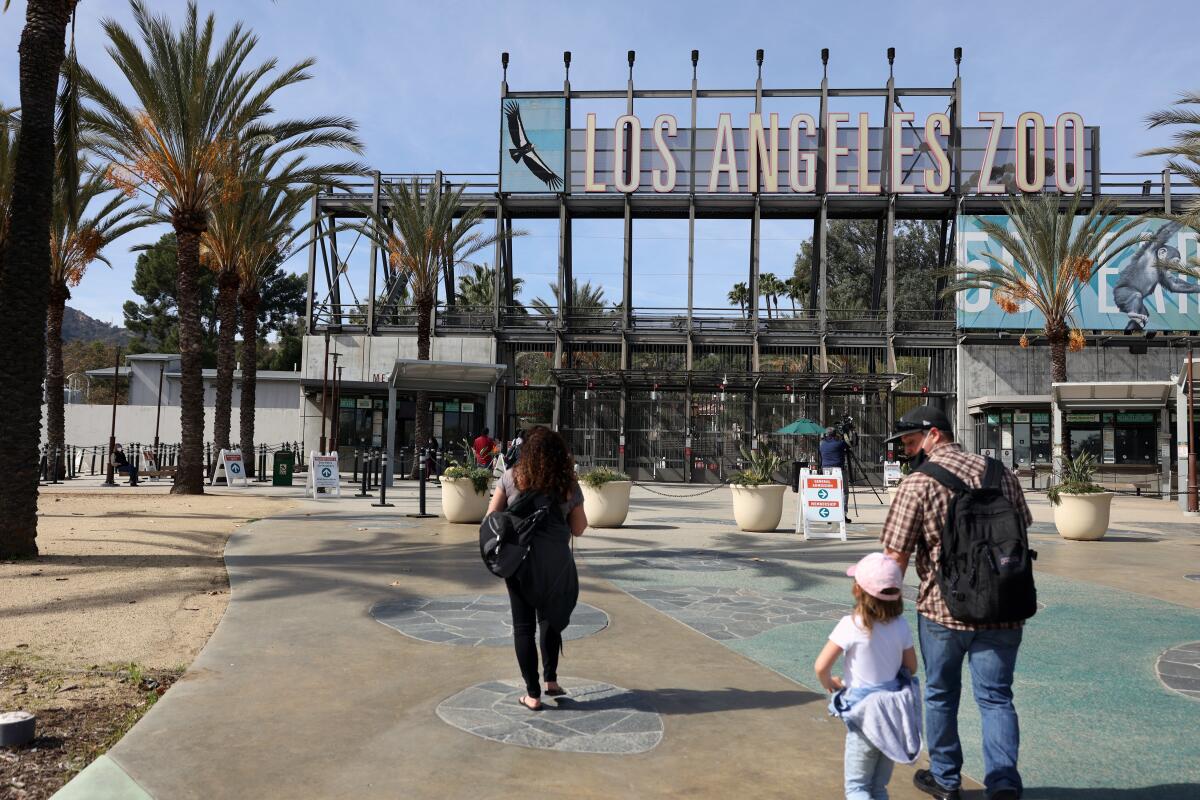
The animals are less concerned with whether they’re observed, Kwan added. Though several human onlookers surmised Tuesday that the animals had missed them, Kwan said the keepers haven’t noticed any behavioral changes during the closures.
“Some animals might pay a little more attention to seeing people again, but it’s been just about two months, so it’ll probably not be too much change for them,” she said, “and we have limited capacity, so they’ll gradually get used to visitors again.”
More to Read
Sign up for Essential California
The most important California stories and recommendations in your inbox every morning.
You may occasionally receive promotional content from the Los Angeles Times.



